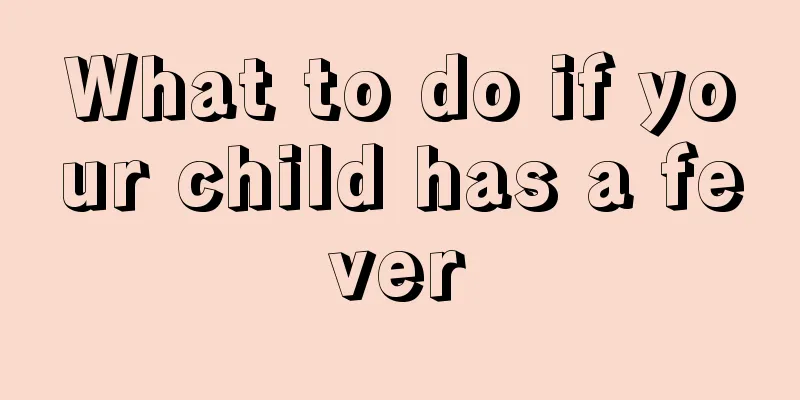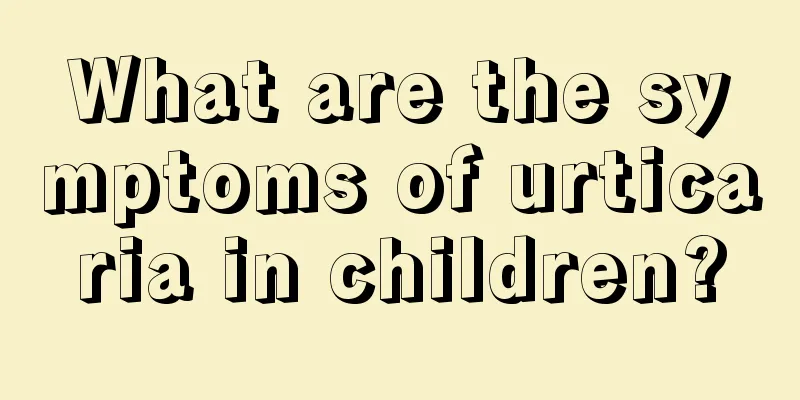The difference between baby rubella and exanthema

|
Many people think that baby rubella and roseola are the same, but in fact there are certain differences between baby rubella and roseola. Therefore, parents should pay attention to these common sense issues. In this way, no matter whether the baby is affected by rubella or roseola, we can treat it scientifically and reduce the impact of this problem on the baby's health. The following is an introduction to the differences between baby rubella and roseola. Rubella: Symptoms are generally mild, with a body temperature of 38-39°C. The rash appears early and quickly, covering the entire body in 1-2 days and disappearing in 2-3 days. The rash is more common on the trunk and less common on the limbs. After the rash subsides, desquamation is generally not obvious. The lymph nodes behind the ears, behind the neck, and behind the occipital bone are often enlarged and tender. The rash is light red, smaller than measles, and slightly raised. There is no specific treatment for this disease and complications are rare. Roseola infantum: The onset is acute, the condition is mild, and it mostly occurs in children under 1 year old. It is characterized by sudden high fever that lasts for 3 to 5 days, followed by a sudden drop in body temperature. A rash appears after the fever subsides, and the rash disappears quickly without dandruff. The child was generally in good condition during the high fever period, with enlarged suboccipital and posterior cervical lymph nodes and no complications. The fever of roseola infantum is high, but it will subside on its own after 2-3 days; scarlet fever initially causes chills and fever, redness, swelling and ulceration in the throat, and the appearance of a "bayberry"-like tongue; the symptoms of chickenpox are generally mild, with a low fever. Measles rash appears gradually, usually in about 3 days. The rubella rash appears quickly, usually all within 24 hours; the roseola infantum rash appears after the fever subsides, usually all within 24 hours; the scarlet fever rash appears quickly and spreads throughout the body within 24 hours; the varicella rash appears in batches and lasts longer. The rash color is dark red for measles, light pink for rubella, roseola infantum, bright red for scarlet fever, and light pink at the beginning of chickenpox, with a red halo around the base after it becomes a herpes. After introducing these common sense contents, parents should now know the difference between baby's roseola and rubella. Knowing these common sense is more beneficial to the baby's health. Therefore, in real life, no matter which parent you are, you should pay attention to understanding these common sense to help your baby prevent roseola rubella. |
<<: What to do if your baby has urticaria
>>: What can't babies eat when they have rubella?
Recommend
What are the reasons for yellow urine in seven-month-old babies?
Many parents are worried about their seven-month-...
What can children eat to grow taller?
I always feel that my child is not tall enough, a...
The harm of binding the hands and feet of newborns
In the past, when ideas and technology were relat...
What to do if your child has toothache
If children do not pay much attention to oral hyg...
What causes stomachache in children after eating?
Children are young and sometimes do not pay atten...
Child's throat is red and coughing
If a child has a sore throat and cough, parents w...
What should I do if my baby has prickly heat in his hair?
The weather in summer is relatively hot, especial...
What can’t mothers eat when their baby has diarrhea? Young women are looking forward to it
Babies are prone to diarrhea. If they are still b...
What are the dietary treatments for tracheitis in children?
Normally, once tracheitis occurs in a child, the ...
What foods can cause precocious puberty in children?
Precocious puberty is a common problem that has b...
What causes stubborn constipation in children?
Many people will have some constipation. When con...
Baby rib valgus
Infant rib valgus may be caused by the baby's...
Reasons for newborns to cough and sneeze
As the saying goes, nine out of ten babies cough!...
There is a soft bump on the baby's head
Parents hope that their newborn babies are health...
How to solve the problem of high fever in three-year-old baby
Both adults and children can have a fever. Fever ...









